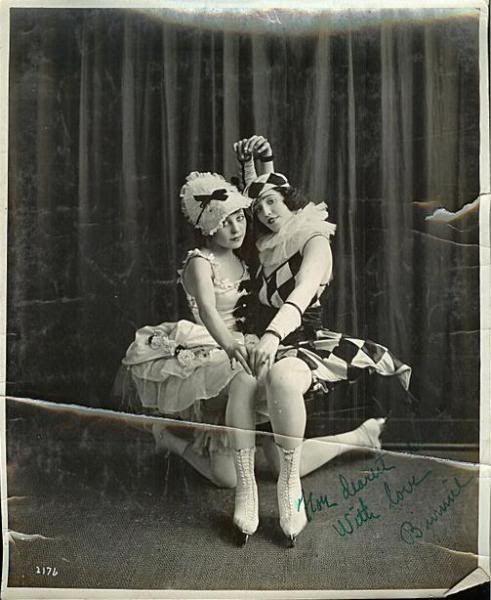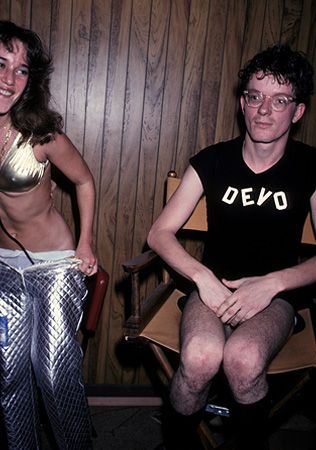



 I recently saw the preview for whatever wacky, unbearable holiday-themed rom-com Reese Witherspoon and Vince Vaughn are in this season. You know, the one where someone gets a fruit cake in the eye and an obnoxious kid who swears kicks Vince Vaughn's shin hahaha.
I recently saw the preview for whatever wacky, unbearable holiday-themed rom-com Reese Witherspoon and Vince Vaughn are in this season. You know, the one where someone gets a fruit cake in the eye and an obnoxious kid who swears kicks Vince Vaughn's shin hahaha.
 And now, the first photo that comes up when "Vince Vaughn + fat" comes up. (In his case, I think the decline of his looks has a lot to do with being a lush):
And now, the first photo that comes up when "Vince Vaughn + fat" comes up. (In his case, I think the decline of his looks has a lot to do with being a lush):

I was going to post photos of some others, such as Tobey Maguire, Adam Sandler, Tom Hanks, and the like, but I feel I've already used my picture quota posting photos of hot young Vince Vaughn. Another excellent example is Leonardo DiCaprio, who is a terrible actor and obviously coasted to fame on his pretty-boy good looks, (which have been completely lost) but is still considered both a sexy romantic lead and, for some reason, a "Great Actor" cast in "Great Movies" by "Great Directors" like "Martin Scorsese."
I'm certainly not saying that people need to remain slim to be attractive, just that it is completely aggravating how women are held to a superficial standard and a constant level of both dieting and general upkeep that men are not. (Especially when a lot of female stars look a lot more healthy and normal when they gain weight, as opposed to the Jim Belushi-esque nosedive men tend to take.) Reese Witherspoon, for example, is six years younger than Vince Vaughn already, and has obviously dieted extensively to keep up her current physique in the movie, and was often considered too "fat" when she was what is probably her normal weight. She never would be cast as a romantic lead twenty pounds heavier, so why should he? Also, do people even like Vince Vaughn anymore? Doesn't it almost seem like he stopped being famous and became famous again for some reason?
 As I have said in previous posts, designer fashion often just seems like a big hullabaloo over nothing. One of the hottest-right-now lines is Rodarte, designed by sisters Kate and Laura Mulleavy. I remember when Rodarte first came out and their photos started appearing in Vogue and stuff, and I used to think, "Wow, I wonder how these two normal-looking women feel about working in the evil fashion industry?" Fitting with my last post, how did they feel about designing clothes they probably couldn't have worn? Well, apparently, Vogue magazine challenged them to lose weight. And, not surprisingly, they did.
As I have said in previous posts, designer fashion often just seems like a big hullabaloo over nothing. One of the hottest-right-now lines is Rodarte, designed by sisters Kate and Laura Mulleavy. I remember when Rodarte first came out and their photos started appearing in Vogue and stuff, and I used to think, "Wow, I wonder how these two normal-looking women feel about working in the evil fashion industry?" Fitting with my last post, how did they feel about designing clothes they probably couldn't have worn? Well, apparently, Vogue magazine challenged them to lose weight. And, not surprisingly, they did.





 But designers, thiness, and trends shouldn't be what fashion is about. Everyday you must get dressed, and more likely than not, you are not a model wearing designer clothes and attending a fashion show. Therefore, there should be a wide range of inspirations for you to draw from, from sea creatures to old movies to burlesque dancers to everything in between. To me, anyone with a strong personal style should be at least slightly offended, at times, with the way fashion is presented to the world.
But designers, thiness, and trends shouldn't be what fashion is about. Everyday you must get dressed, and more likely than not, you are not a model wearing designer clothes and attending a fashion show. Therefore, there should be a wide range of inspirations for you to draw from, from sea creatures to old movies to burlesque dancers to everything in between. To me, anyone with a strong personal style should be at least slightly offended, at times, with the way fashion is presented to the world.  It is shocking- simply shocking that Ms. Lauren "LC" Conrad has not only maintained her level of fame from when I made a post about hating her an entire year-ish ago, but her fame level has actually risen. MTV's The Hills really feeds into our culture's obsession both with faux-reality TV and the blandest and shallowest of female archetypes. Whereas once MTV had shows like Daria and played Hole videos, today it's a horrifying amalgamation of My Super Sweet Sixteen, Katy Perry's astoundingly weak-ass take on retro glamour, the botoxed 22-year olds of The Hills and beyond, and the occasional Hannah Montana visit. Nice outfit, LC! Real unique!
It is shocking- simply shocking that Ms. Lauren "LC" Conrad has not only maintained her level of fame from when I made a post about hating her an entire year-ish ago, but her fame level has actually risen. MTV's The Hills really feeds into our culture's obsession both with faux-reality TV and the blandest and shallowest of female archetypes. Whereas once MTV had shows like Daria and played Hole videos, today it's a horrifying amalgamation of My Super Sweet Sixteen, Katy Perry's astoundingly weak-ass take on retro glamour, the botoxed 22-year olds of The Hills and beyond, and the occasional Hannah Montana visit. Nice outfit, LC! Real unique! 


On the plus side, I'm enjoying the photo of Beyonce below. She is bringing it in a way it so rarely brought in today's dire media landscape. Let's have a little more of this and a little less of this, please.
 The Olsens look like they're dressing up in their mother's clothes, and their mother is a dominatrix from 1996. First, let's start with Mary Kate, my fave Olsen. She is wearing a long, boxy, 1996 blazer. Underneath, something flowy and scarf-like that is dangling out beneath it. En pointe, she has done away with pants, which we all know is chic, chic, chic for the MK set these days.
The Olsens look like they're dressing up in their mother's clothes, and their mother is a dominatrix from 1996. First, let's start with Mary Kate, my fave Olsen. She is wearing a long, boxy, 1996 blazer. Underneath, something flowy and scarf-like that is dangling out beneath it. En pointe, she has done away with pants, which we all know is chic, chic, chic for the MK set these days. Here they are with models wearing their "fashion line," The Row, which I saw at Barney's this summer. (Though, supposedly, Ashley has asked Mary Kate to leave the company because she doesn't do anying.) Bleh. The models, despite being really tall, look dumpy in these looks too. MK, on the other hand, now looks like a tiny seventy-year old who's had one facelift too many. She's very versatile.
Here they are with models wearing their "fashion line," The Row, which I saw at Barney's this summer. (Though, supposedly, Ashley has asked Mary Kate to leave the company because she doesn't do anying.) Bleh. The models, despite being really tall, look dumpy in these looks too. MK, on the other hand, now looks like a tiny seventy-year old who's had one facelift too many. She's very versatile.
 On fashion designer Donna Karan's new age tendencies: "Donna Karan, who spends more time casting runes than casting fashion shows." (Bitch names names! Love it!)
On fashion designer Donna Karan's new age tendencies: "Donna Karan, who spends more time casting runes than casting fashion shows." (Bitch names names! Love it!)